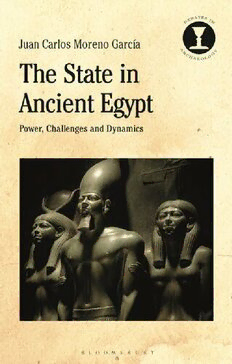
The State in Ancient Egypt: Power, Challenges and Dynamics PDF
249 Pages·2020·2.745 MB·English
Most books are stored in the elastic cloud where traffic is expensive. For this reason, we have a limit on daily download.
Preview The State in Ancient Egypt: Power, Challenges and Dynamics
Description:
This book presents a new analysis of the organization, structure and changes of the pharaonic state through three millennia of its history. Moreno García sheds new light on this topic by bringing to bear recent developments in state theory and archaeology, especially comparative study of the structure of ancient states and empires. The role played by pharaonic Egypt in new studies often reiterates old views about the stability, conservatism and ‘exceptionalism’ of Egyptian kingship, which supposedly remained the same across the Bronze and Iron Ages.Ancient Egypt shared many parallels with other Bronze and Iron Age societies as can be shown by an analysis of the structure of the state, of the limits of royal power, of the authority of local but neglected micro-powers (such as provincial potentates and wealthy non-elite), and of the circulation and control of wealth. Furthermore, Egypt experienced deep changes in its social, economic, political and territorial organization during its history, thus making the land of the pharaohs an ideal arena in which to test applications of models of governments and to define the dynamics that rule societies on the longue durée. When seen through these new perspectives, the pharaonic monarchies appear less exceptional than previously thought, and more dependent on the balance of power, on their capacity to control the kingdom’s resources and on the changing geopolitical conditions of their time.
See more
The list of books you might like
Most books are stored in the elastic cloud where traffic is expensive. For this reason, we have a limit on daily download.
